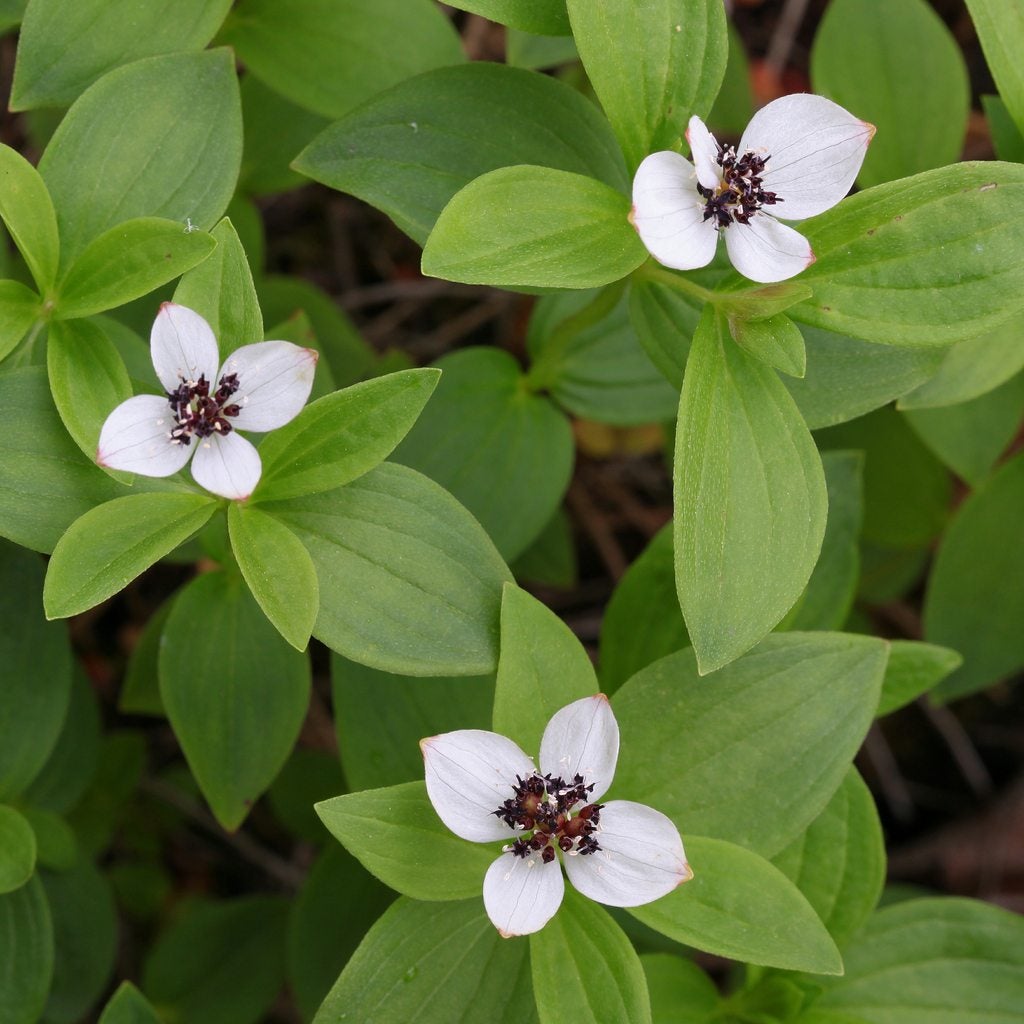Dwarf Cornel Care: Tips For Growing Dwarf Cornel Plants


Dwarf cornel plants (Cornus suecica) are small, spreading dogwood shrubs that are truly ornamental. Despite their small size, dwarf cornel shrubs can make your garden lovely all summer long with their flowers and berries. For more information about dwarf cornel dogwood, read on.
Ornamental Dwarf Cornel Plants
Dwarf cornel dogwoods, often called bunchberry but a different species than the bunchberry flowering vine, are a decorative addition to your garden or backyard. These short shrubs spread quickly via runners that grow from the horizontal rootstock. The shrubs grow into a thick groundcover 4 to 10 inches (10-25.5 cm.) tall. Dwarf cornel dogwood is extremely pretty during the summer, since it bursts into flower in June or July. The flowers are black, which is unique in and of itself. Each blossom sits on a base of four white bracts that are commonly mistaken for flower petals. In time, the plants produce red, juicy berries. The berries grow in long clusters of shiny fruit on the ends of the stems. The berries won’t kill you, but they aren’t delicious either, so most gardeners leave them to the birds. In the autumn, as the growing season draws to a close, dwarf cornel foliage turns a beautiful, purplish-brown. The colors are vivid and intense.
How to Grow Dwarf Cornel Plants
If you want to start growing dwarf cornel but you live in a chilly climate, you’re in luck. These plans are hardy to U.S. Department of Agriculture plant hardiness zones 2 through 7. That means that those in really cold regions can think about growing dwarf cornel too. Dwarf cornel is native to the arctic regions of Europe, America, and Asia, although the range extended south in Europe into Britain and Germany. Its native habitat is often by water, on lake shores, river banks, swamps, and bog edges. Plant these perennials in a full sun area, although they can also grow well in light shade. Dwarf cornel plants grow best in sandy or loamy soils. They prefer slightly acidic soil. Dwarf cornel care includes regular irrigation, as the shrubs do best in constantly moist soil.
Gardening tips, videos, info and more delivered right to your inbox!
Sign up for the Gardening Know How newsletter today and receive a free copy of our e-book "How to Grow Delicious Tomatoes".

Teo Spengler is a master gardener and a docent at the San Francisco Botanical Garden, where she hosts public tours. She has studied horticulture and written about nature, trees, plants, and gardening for more than two decades. Her extended family includes some 30 houseplants and hundreds of outdoor plants, including 250 trees, which are her main passion. Spengler currently splits her life between San Francisco and the French Basque Country, though she was raised in Alaska, giving her experience of gardening in a range of climates.
-
 ‘Coral Charm’ Peony Care For Sublime Semi-Double Peonies With Lush Salmon Pink Flowers
‘Coral Charm’ Peony Care For Sublime Semi-Double Peonies With Lush Salmon Pink FlowersPeonies are known for their soft baby pink or magenta tones, but if plushy coral blooms are your thing, here’s our guide to the ultimate ‘Coral Charm’ peony care
By Tonya Barnett
-
 How To Grow Seeds Quickly: 8 Expert Tricks For Fast Flowers & Crops
How To Grow Seeds Quickly: 8 Expert Tricks For Fast Flowers & CropsIt's never too late to start growing! Jump-start your flower or vegetable garden with these pro tips and tricks for germinating seeds in record time.
By Amy Grant